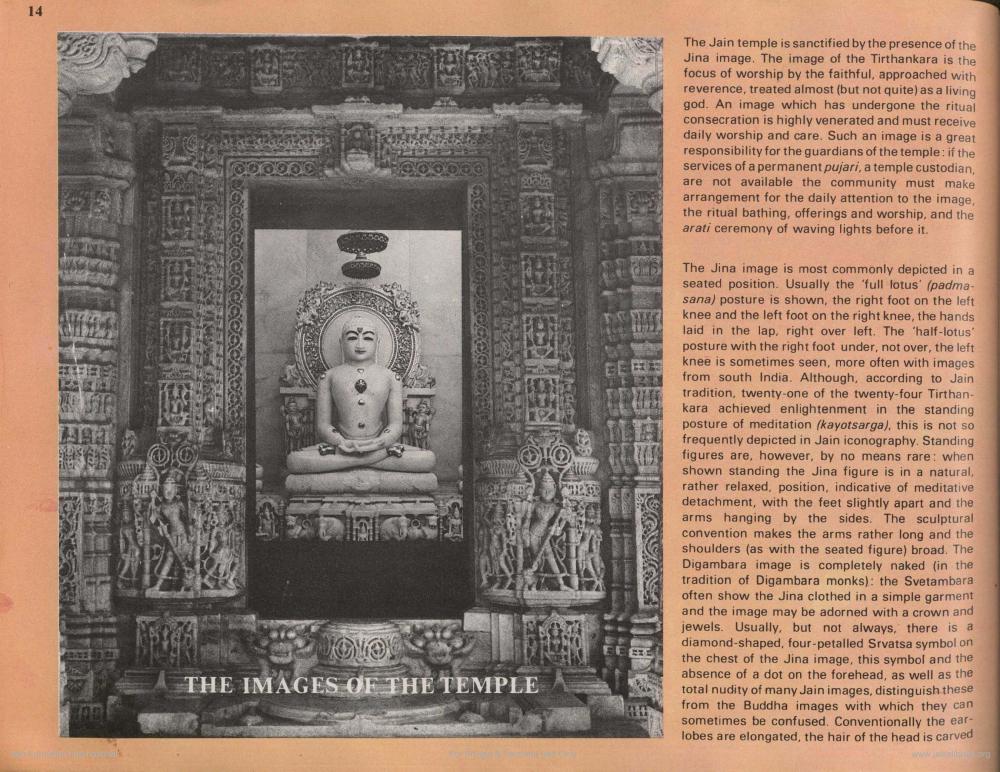________________
14
The Jain temple is sanctified by the presence of the Jina image. The image of the Tirthankara is the focus of worship by the faithful, approached with reverence, treated almost (but not quite) as a living god. An image which has undergone the ritual consecration is highly venerated and must receive daily worship and care. Such an image is a great responsibility for the guardians of the temple: if the services of a permanent pujari, a temple custodian, are not available the community must make arrangement for the daily attention to the image the ritual bathing, offerings and worship, and the arati ceremony of waving lights before it.
HODOD05
9.09.09
12
DE
The Jina image is most commonly depicted in a seated position. Usually the full lotus' (padmasana) posture is shown, the right foot on the left knee and the left foot on the right knee, the hands laid in the lap, right over left. The 'half-lotus' posture with the right foot under, not over, the left knee is sometimes seen, more often with images from south India. Although, according to Jain tradition, twenty-one of the twenty-four Tirthankara achieved enlightenment in the standing posture of meditation (kayotsarga), this is not so frequently depicted in Jain iconography. Standing figures are, however, by no means rare: when shown standing the Jina figure is in a natural rather relaxed, position, indicative of meditative detachment, with the feet slightly apart and the arms hanging by the sides. The sculptural convention makes the arms rather long and the shoulders (as with the seated figure) broad. The Digambara image is completely naked in the tradition of Digambara monks): the Svetambara often show the Jina clothed in a simple garment and the image may be adorned with a crown and jewels. Usually, but not always, there is a diamond-shaped, four-petalled Srvatsa symbol on the chest of the Jina image, this symbol and the absence of a dot on the forehead, as well as the total nudity of many Jain images, distinguish these from the Buddha images with which they can sometimes be confused Conventionally the ear lobes are elongated, the hair of the head is carved
THE IMAGES OF THE TEMPLE




